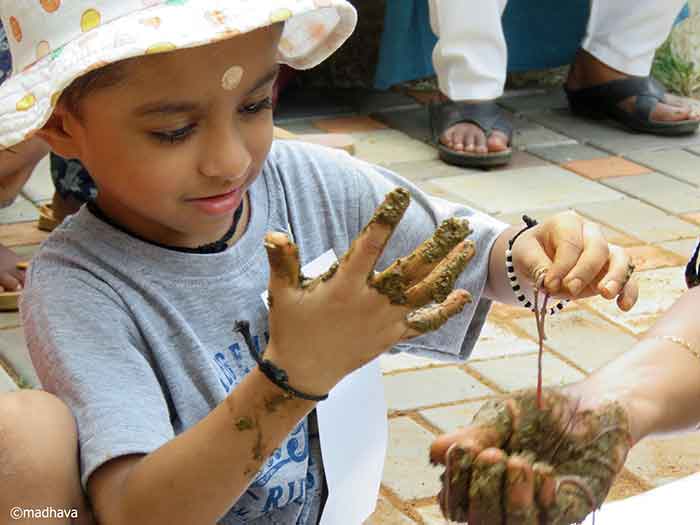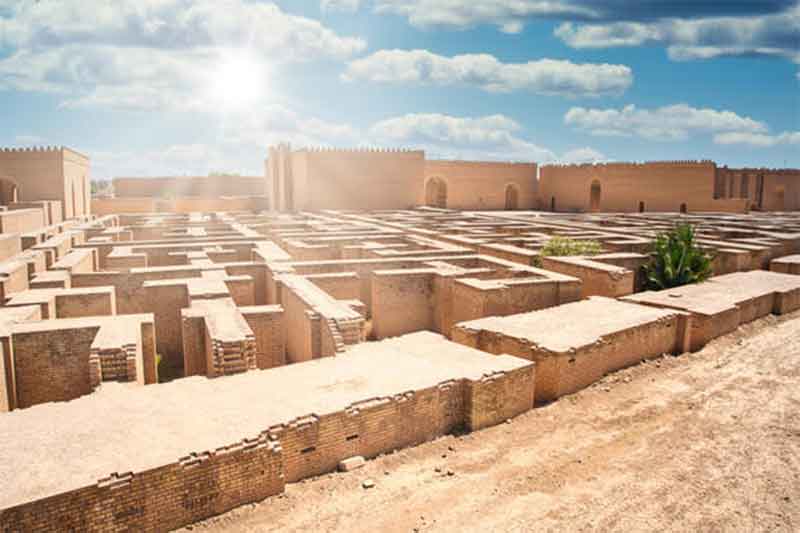To build a different system—one that values healthy soils, biodiversity, clean water, and human capital over exploitation and profit at all costs—we must invest in the knowledge that supports it.

Soil scientist E. Britt Moore drives home the foundational nature of soil to his undergraduate students with an etymology lesson. Human, he tells them, comes from the Latin humus, or soil. Adam is from the Hebrew adamah, meaning ground. Regardless of whether you believe God creating the first human from clay is mythology, says Moore, “societies before us understood an intimate connection between people and soil.”
In its 400-year history, the United States has largely severed this relationship. From the beginning, the U.S. agricultural economy has been based on exploitation of the land and of people of color, and modern farm practices treat soil as an extractive resource. Centuries of institutionalized discrimination have resulted in soils expertise being seen not as a common heritage for all people but as specialized knowledge belonging to a certain class: landowners, farmers, and researchers—all predominately white. Meanwhile, many communities of color, both urban and rural, live on ground that is contaminated and depleted.
Even those aiming to address these problems by improving soil health follow the same pattern.
“The demographics of the people on the front lines fighting for justice are very different than the demographics of the people researching [regenerative agriculture],” Moore observes.
The big names in regenerative agriculture are white, and the movement has faced criticism for not acknowledging the roots of its knowledge base in Indigenous and Black agricultural practices. At the same time, much racial equity and environmental justice work tends to be far removed from considerations of landscape-scale ecology. Moore is part of a growing movement of scientists, researchers, farmers, and community leaders working to bridge this gap.
Today’s systems of exploiting the soil were developed alongside systems of human exploitation and oppression; to address one, we must address both—and that starts with the soil.
Parallel Histories of Exploitation
The outlines of the development of U.S. agriculture are familiar: white colonial governments took land from Indigenous peoples through massacres, broken treaties, and outright land theft. Backed by international business interests, they built a tremendously profitable economy on the land based on free labor made possible by legal enslavement of kidnapped Africans and their descendants.
Across what is now the Midwestern farm belt, the 1862 Homestead Act promised parcels of land to white settlers if they farmed it using the production-oriented methods of the day: plowing up the deep prairie and planting shallow-rooted annual crops. While most of the parcels went to speculators and others with capital rather than to working farmers, the land was nonetheless effectively redistributed to white ownership. Meanwhile, the post-Civil War order popularized as “40 acres and a mule,” granting land to formerly enslaved people, was overturned within a year. Subsequent U.S. agriculture policy has played out in similar ways, consistently benefiting white farmers, larger-scale operations, and, ultimately, corporate interests. The U.S. Department of Agriculture has admitted to decades of discrimination against Black farmers and other farmers of color.
On the ground, the 1860s “sod-busting,” as plowing the prairie became known, destroyed millions of acres of deep-rooted tall grasslands and forests. The native prairie was a complex above- and belowground ecosystem, supported by a web of life from microbes to bison and stewarded for millennia by Indigenous communities. As annual grain crops replaced perennial prairie and seasonal plowing replaced the movement of bison grazing tall grass, some of the richest soil in the world was exposed, dried to dust, and blew as far as New York City. In response to the Dust Bowl, New Deal-era farm policy prioritized conservation measures, but priorities changed just a few decades later, and farmers were again encouraged to plant “fencerow to fencerow.”
The legacy of these parallel histories is, at the societal level, an agricultural landscape that is today over 95% white, and where 5% of farms account for 75% of all farm sales. Regardless of actual demographics, rural has become nearly synonymous with white, while urban is too often used as a dog whistle to mean communities of color.
Environmentally, the ongoing focus on producing for maximum yield has been a disastrous legacy. Established corporate supply chains, demand for livestock feed, and government support for corn and soybeans have led these two annual grains to dominate the rural landscape, despite persistent oversupply. The crops are dependent on chemical fertilizers and pesticides and grown in a way that leaves the ground bare for two-thirds of the year. Livestock, formerly raised alongside field crops, are grown out in large confinement barns. Agricultural chemicals and large concentrations of manure cause persistent challenges with nitrate pollution of waterways and drinking water. Without perennial roots or year-round grass cover, soil becomes dry and unstable, likely to blow away or wash into lakes, streams, and groundwater, harming ecosystems and human health.
The Benefits of Continuous Living Cover
The environmental crises of modern agriculture—catastrophic loss of soil and biodiversity, water pollution, contribution to climate change, and much more—have become so extreme that some are tempted to focus exclusively on that aspect of U.S. agriculture’s exploitative legacy. But others across the Upper Midwest and beyond are finding the importance of addressing agriculture’s harms to society and the earth together, inspired by a systems-based approach centered around continuous living cover (CLC).
CLC is a set of regenerative agriculture practices whose basic tenet is keeping soil covered with living matter and living roots in the ground at all times, making it better able to absorb and retain water, limit runoff, and retain nutrients. CLC practices allow farmers to reduce or eliminate chemical input use, as the increased biodiversity builds soil fertility and natural pest resistance. Diversification of crops and farm products can lead to new marketing opportunities. Ultimately, this can lead to additional community economic benefits with a focus on local and regional supply chains that grow to meet new processing and product development opportunities.
There are many different ways that farmers and landowners can approach CLC to meet their needs and the needs of the land. CLC options include harvested or unharvested winter or year-round cover crops such as camelina winter oilseed, new perennial grain crops like Kernza® perennial grain, agroforestry approaches including orchard trees or windbreaks, and integration of livestock.
A Systems Approach with Broad Impact
Many farmers who adopt a CLC approach find that it can be quickly life-changing. Central Illinois farmers Kathy and Rick Kaesebier farmed conventional corn and soybeans for 40 years, until some unusual soil problems led them to take a soil health course. An experiment with 20 acres of cover crops quickly expanded as they learned about soil ecology. Five years later, they have cover crops planted on every possible acre of the 600 that they farm and they have diversified their operation to include wheat, a multispecies cover crop, cattle, Katahdin sheep, layer hens, and honeybees.
“We’ve increased our cow numbers each year,” Kathy writes in an email. Grazing the multispecies cover crop currently supports 16 head, and there is strong local demand for the beef. After a lifetime of field crops, she loves working with livestock too, joking, “I’d have 100 sheep if I could just get Rick to agree.”
Not all farmers practicing CLC cropping make such a dramatic shift, but the whole farm system approach can make it more likely. In contrast with the modern agricultural mindset of finding a discrete solution for a discrete problem, the CLC approach recognizes that the farm is a complex ecosystem: start tugging on one thread, and suddenly you may have to re-knit the whole sweater—or rethink your whole crop plan, now based around 100 sheep.
For Britt Moore, this is the appeal of CLC. Moore, who is beginning a position at University of North Carolina-Wilmington after completing his PhD in soil physics at Iowa State University, never expected to devote his life to soil. Growing up Black on the South Side of Chicago, he attended an agriculture science magnet school, which got him interested in the natural world. After studying agroecology and ecosystems interactions in college, he was examining the benefits of cover crops for his Master’s degree when he realized that the soil was more interesting than the plants—and that the way they interacted was the most interesting of all.
“It was a jump from ecosystems to systems in general—and how soil is foundational to cultural, social, and economic systems,” he says of his engagement with CLC systems.
The interconnection doesn’t stop at the farm gate.
“You can’t talk about social justice without talking about soil,” he says, giving the example of people of color disproportionately living in areas with contaminated soils. The pollution alone is harmful, but there is another level of impact when it comes to food security: many urban residents who could most benefit from growing their own food cannot do so without special attention to the soil. They usually do not have the expertise to address it—knowledge about soil isn’t seen as the domain of people of color—and the resources are not available: “There aren’t even the level of detailed soil maps in urban areas as for a farm in Iowa,” Moore says.
Growing Awareness
Moore was recently one of over two dozen contributors to a white paper published this week by Green Lands Blue Waters examining how a CLC-inspired systems approach can transform the future of agriculture, from soil health to racial justice. (Disclosure: I was also a contributor.) With a view across the farm support network, the paper features examples of long-time and new farmers, agriculture professionals, researchers, and others taking a different approach to their work with both ecosystems and society, and often seeing the two as parts of an interconnected whole.
For some, the approach is not new: Tsyunhehkw^ Farm on the Oneida Nation in Wisconsin has re-established the tribe’s indigenous high-protein white corn and practices intensive rotational grazing with a Shorthorn cattle herd, mimicking the movement of bison on the Great Plains. Farm manager Kyle Wisneski and others have been keeping traditional practices alive on the farm for decades. In last few years, the tribal government has rapidly expanded the land base under the stewardship of Tsyunhehkw^, as soil contamination on nearby land and pandemic food insecurity brought renewed tribal interest to holistic farm techniques that have worked for generations.
Others are taking a systems approach to growing the CLC knowledge base itself. In recent decades, much agricultural research, even at public institutions, has been funded by private corporations. As a result, research on intensive, input-based methods likely to benefit a corporate funder’s bottom line now far outweighs research on systems-based regenerative agriculture techniques. In Wisconsin, Grassland 2.0, a multistakeholder collaborative focused on transitioning livestock production from grain-based to grass-based, is instead building expertise through collaboration. With a five-year grant from the U.S. Department of Agriculture, project partners, including farmers, researchers, and business leaders, are creating learning hubs in farm communities around Wisconsin and surrounding states to tap into local knowledge. To understand the system-level change necessary to support farmers converting to intensive grazing, the group is examining everything from farm-level best practices for soil health and biodiversity to developing supply chains with lenders to renegotiating relationships with equipment dealers.
Moore himself points out the critical necessity of expanding who has access to an understanding of the natural world. Before he started his PhD, he taught high school science in an under-resourced urban school, where his students had never been asked to think about the connection between food and agriculture.
His own story, he says, of a Black kid from Chicago going into soil science, is all too rare. The rarefication and white-washing of knowledge about the natural world is a loss for everyone. He advocates for significant investment in early agricultural education in urban schools, to equalize who has expertise about the environment we all live in and to change the face of agricultural professionals in the next generation.
Looking at the last 250+ years of yield-driven U.S. agriculture and the exploitation that has made it possible, Moore says, “We have a system that values a particular set of knowledge—and that’s what it supports and funds.”
To build a different system—one that values healthy soils, biodiversity, clean water, and human capital over exploitation and profit at all costs—we must invest in the knowledge that supports it. The good news is that many people are doing just that.















































